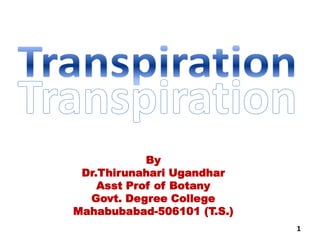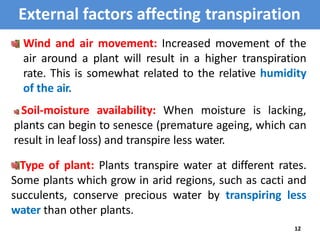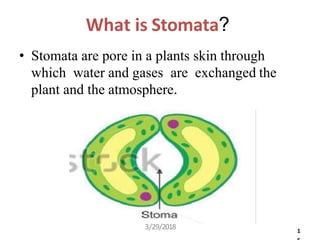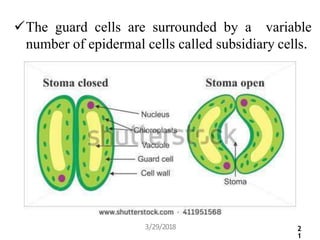The document discusses the process of transpiration in plants, including defining transpiration, describing the different types of transpiration (cuticular, lenticular, and stomatal), and outlining some of the internal and external factors that affect the rate of transpiration such as temperature, humidity, and soil moisture availability. It also examines how much water plants can transpire and the advantages of transpiration for plants.















































